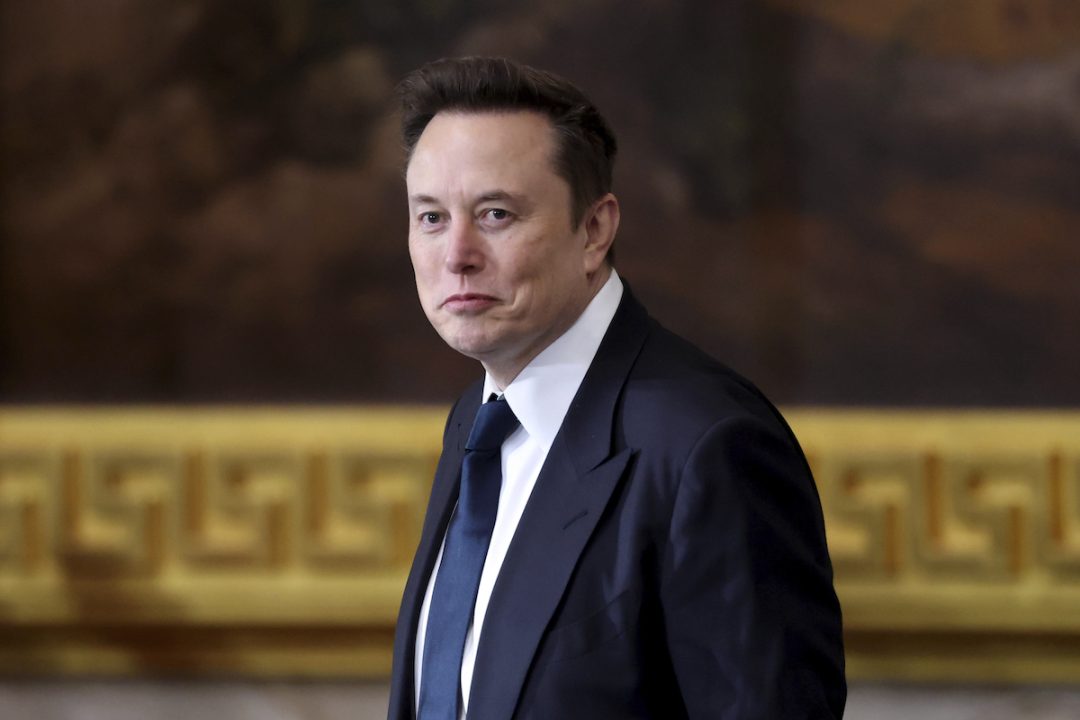
While public discourse is consumed by a deluge of executive orders and scandalous exposés of waste and corruption, the Trump administration, with Elon Musk’s United States DOGE Service (USDS) at the helm, is quietly executing a radical AI-driven overhaul of federal operations.
The recently established USDS, whose goal is to “[modernize] Federal technology and software to maximize governmental efficiency and productivity,” has instead handed Musk and his allies unprecedented control over federal technology strategy — with little scrutiny and even less accountability.
What was pitched as a reasonable efficiency initiative is rapidly escalating into a full-scale AI revolution, one that raises serious concerns about oversight, transparency, and the unchecked power of unelected technocrats. While the public fixates on taxpayer waste, the real transformation is happening behind the scenes: Washington isn’t just being “streamlined” — it’s being reprogrammed.
DOGE and TTS
DOGE (a revamped United States Digital Service) and the Technology Transformation Services (TTS) are driving the overhaul of fundamental government operations. TTS is an obscure division within the U.S. General Services Administration (GSA) tasked with modernizing federal IT infrastructure. Now, TTS — along with the GSA — has become the first testing lab for Musk’s “AI-first” government experiment.
Leading the effort is Thomas Shedd, a former Tesla engineer turned government disruptor. Under his leadership, TTS is rewiring the system to run on AI. Put simply, TTS builds the tech and DOGE sets the rules. Together, they’re transforming federal agencies into automated bureaucracies where algorithms call the shots.
“AI-first” and Drive Toward Automation
During last Monday’s meeting, Shedd laid out his vision for the agency’s transformation, according to Wired. He outlined plans for TTS to operate like a “startup software company,” centralizing vast amounts of federal data and “automating different internal tasks” — a euphemism for ultimately replacing human workers with AI-driven systems.
According to Wired, the center of this plan is GSAi, a generative AI chatbot designed to handle administrative tasks and streamline federal procurement. The GSA, which acts as the federal government’s landlord, tech supplier, and procurement department, oversees billions of dollars in contracts and manages essential infrastructure for other agencies. Automating such a critical function fundamentally shifts how the government operates.
This “AI-first” agenda doesn’t stop at the GSA. The plan is to embed AI into every federal agency, with the focus on financial operations. Per the report,
In what he described as an “AI-first strategy,” … Shedd provided a handful of examples of projects GSA acting administrator Stephen Ehikian is looking to prioritize, including the development of “AI coding agents” that would be made available for all agencies. Shedd made it clear that he believes much of the work at TTS and the broader government, particularly around finance tasks, could be automated.
That could fundamentally change how the government interacts with citizens, hires contractors and employees, and processes benefits. It would also have far-reaching consequences for regulation enforcement, procurement management, compliance oversight, and even policy-making.
Amplifying Waste to Justify “Efficiency Effort”
In a strategic narrative shift, the administration has placed government waste at the center of public debate. They have also positioned AI-driven automation as the solution. To reinforce the urgency, recent headlines have highlighted USAID’s “shocking” spending — from $1.5 million for DEI initiatives in Serbia to $70,000 for a DEI musical in Ireland and $25,000 for a transgender opera in Colombia. Not to mention the agency has been fueling regime-change operations for the CIA.
And if there was ever a sure sign that reform is long overdue, it’s the hysterical reaction from Democrats. Their outrage over Musk’s exposé of USAID spending all but confirms that this so-called “efficiency effort” is hitting the right nerve with the “Establishment.”
“That’s exactly what Elon Musk has been tasked by President Trump to do: get the fraud, waste, and abuse out of our federal government,” said White House press secretary Karoline Leavitt.
Left unsaid is that that “efficiency” comes at a price — trading bureaucrats for algorithms and human oversight for AI control.
You Voted for It — Or Did You?
The narrative has now escalated. This isn’t just about fixing waste — it’s what Americans supposedly “voted for.”
According to Rep. Marjorie Taylor Greene (R-Ga.), Musk’s DOGE was an integral part of Trump’s 2024 campaign messaging. She said Americans “love DOGE [and its concept]” of cutting waste, slashing bureaucracy, and rooting out corruption — which is true.
But let’s be clear: Musk was not on the ballot, and his AI takeover was never part of the campaign. Yes, the cuts are necessary. But outsourcing the entire operating system of the U.S. government to AI? That was never up for debate.
The Friendly Oligarch
The Founding Fathers despised oligarchy, understanding that when power concentrates in the hands of the few, liberty is the first casualty. James Madison, the architect of the Constitution, put it plainly:
The accumulation of all powers, legislative, executive, and judiciary, in the same hands, whether of one, a few, or many … may justly be pronounced the very definition of tyranny.
What they feared was not just monarchy, but any elite class — corporate, political, or technological — that could override democratic checks and establish rule by the unelected.
And yet, here we are.
Elon Musk is often painted as a revolutionary battling the Deep State — the billionaire outsider with a libertarian streak supposedly here to dismantle entrenched power structures. Yet the reality is far less rebellious and far more disturbing.
Massive government contracts. A China-style “everything app.” Transhumanist ambitions in which the future belongs to those plugged into his brain-chip. These aren’t the hallmarks of an anti-establishment disruptor — they’re massive red flags. And it’s time to start paying attention.
From “Efficiency” to Technocracy
With DOGE teams embedded throughout the federal government, armed with AI tools, what was presented as an efficiency initiative is now morphing into an AI-driven technocracy, perfectly aligned with the globalist ambitions of the United Nations (UN) and the World Economic Forum (WEF).
While Musk’s automation crusade may shrink the federal workforce, the actual functionality of government could expand beyond anything previously imagined — turning governance into a self-sustaining, AI-operated apparatus with unprecedented reach and power.
Make no mistake. Up to 80 percent of the U.S. federal government is unconstitutional. The New American and its parent company, The John Birch Society (JBS), have long argued this. Yet the remedy for this is straightforward, free, and low-tech: returning governance within constitutional boundaries, with most functions performed at the local level.
Handing the operating system of the U.S. government to a single, unelected billionaire under the guise of reform isn’t just a dangerous gamble — it’s a direct threat to the Republic that the Founders would have recognized instantly. With sweeping control over AI governance, defense contracts, space infrastructure, Treasury operations, and the automation of federal agencies, the real question isn’t whether Musk is a disruptor. It’s whether he’s consolidating power faster than any Establishment figure before him.
Related
America Needs a Constitutional Government, Not an “Efficient” One
From Manhattan Project to IT Upgrade: DOGE and the Federal Overhaul That Wasn’t
The AI Deep State? OpenAI Is Embedding in Government and Defense
Trump to Declare National Energy Emergency, Linking “AI Arms Race” to Energy Policies
Trump Unveils $500 Billion “Stargate” AI Project, in Line With WEF Agenda





